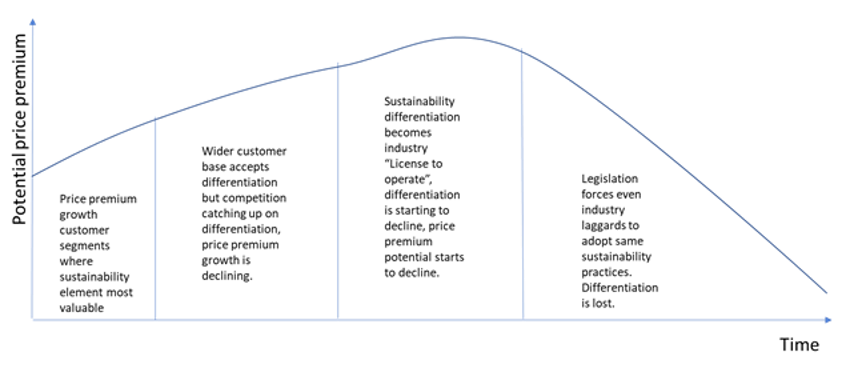
Being a business consultant at Vendavo and a farmer in Finland, sustainability feels personal. The changing climate is visible very concretely, for example, the crops I can grow now and in the future.
While I have already had a nearly decade-long project to turn our classic farm into an operation focusing on perennial crops, it was unimaginable just a few years ago that I could plant chestnuts, which I did this autumn. These changes highlight the need to adapt to climate change and keep pushing on mitigating actions.
Both mitigation and adaptation are needed to achieve satisfactory results. When striving for these results in business and investing in sustainability actions, pricing can be an effective tool to ensure returns from sustainability activities.
Success in pricing sustainability has the same foundation as any other successful pricing effort: innovation and competitive differentiation. Some key areas should be considered:
- Climate
- Social Impact
- Resource Usage
These topics are naturally interconnected, but it is helpful to separate them in this context and focus on Climate and Resource Usage.
Climate
Sustainability focuses on reducing emissions that contribute to climate change. The most usual action is to reduce emissions. Capturing the reduction as a competitive advantage is usually the tricky part. There are some great examples of this already seen. I want to highlight SSAB with its introduction of carbon-free steel.
Here the entire product is centered on climate impact, and it has a powerful value statement using sustainability as the key differentiator. This approach gives a high competitive advantage when serving the customer segments aligned to the climate impact value statement.
The key to long-lasting differentiation is to go beyond the norm. For many organizations, the current publishing of sustainability reports will not differentiate within Europe as the EU plans to make sharing such information mandatory for most big companies.
Resource Usage
Whether a company produces physical products or services, some input is needed to create the resulting output. Minimizing the need for non-renewable inputs and making the input source transparent to customers can be used in differentiation.
This transparency needs to be real. For example, using certificates is seldom enough for true differentiation as they are widely adopted and become “license to operate” in a market.

- Key Differentiators for Pricing:
- Focus on Climate Impact
- Changing the game
- Focus on early adopters as initial segment
SSAB is pioneering new steel production methodology that uses hydrogen reduction instead of the current carbon-intensive steel-making process. The end product remains unchanged, but the product technology is the main driver for future competitive advantage. Although full-scale production is only being planned for the future, several world leading companies have signed up for new carbon-free steel.
A good example of a genuinely transparent input chain is Neste. Neste shows the sources of the raw materials for renewable diesel even on their public website. This creates transparency and trust that are then woven into the value promise.
Building a Framework for Differentiation
Similarities and patterns can be seen across the different areas of sustainability and how they are used to gain competitive differentiation. Using these patterns, a framework for price premium development based on sustainability can be created.

Like any innovation, progress in sustainability will be more valuable initially in early adopter customer segment. As the potential price premium increases, the market niche will gather more interest and attract competitors who will strive to narrow the differentiation gap.
The price premium potential gained by specific sustainability actions, especially the widely used certification approach, can quickly erode as certificates become widely used.
Finally, it is a recurring theme that legislation is used in the end to force some sustainability actions into the whole market, closing the gap created by individual companies’ actions to drive sustainability.